Curriculum Maps


Literacy:
This half term the children will continue to learn how to write their name. They will develop this by learning to recognise pictures associated with particular graphemes from the Read Write Inc Phonics scheme. Children will continue to vote for the ‘must read’ book of the day and join in with the familiar stories. The children will be able to talk about significant events that happen in those familiar stories.
Communication and Language:
The children are now able to listen to stories of increasing length and can talk about what happens. Children will give answers as full sentences instead of short answers of one or two words. The children will develop their ability to keep play going by listening to their friends and responding to their ideas. They will listen to the experiences of others and talk about how they are similar or different to their own.
Expressive Arts & Design:
Children will be encouraged to think about what they would like to create and supported to follow through with their own ideas and designs. The children will continue to develop their use of scissors and glue to alter the shape of materials and reach a desired outcome. The nursery children will learn more familiar songs and nursery rhymes and sing confidently to a small audience.
Mathematics:
This half term the children will develop their knowledge of mathematical concepts in daily maths sessions based around five main principles; Counting, Ordering, Subitising, Measurement and Comparison.
Children will learn about 2D shapes and their properties. They will be able to describe what is the same and what is different about particular shapes.
Understanding the World:
The nursery children will experience more festivals and celebrations from around the world such as Chinese New Year, Ramadan and Easter. As Spring approaches, the children will experience planting their own seeds and bulbs and help their plants to grow. They will be able to observe the change over time of their own plants and those in the surrounding grounds.
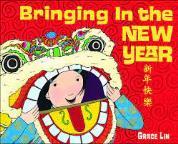
The children will have more experience of the outdoors through planned learning opportunities in the forest area of the school grounds.
Physical Development:
Nursery Curriculum Map Spring One
The children will have more opportunity to develop their fundamental movements in directed P.E sessions and planned indoor and outdoor opportunities. They will be supported to challenge themselves to use cutlery in the dining hall by cutting in to their food. They will develop their fine motor skills by using tweezers, threading, and attempting to zip up coats and fasten buttons.
Additional Information:
Nursery will be continuing with their ‘Share a Story’ with regular visits to the school library. Please ensure that books are returned by the following Friday so books can be changed.
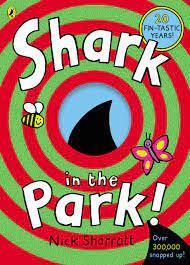
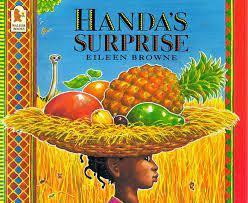
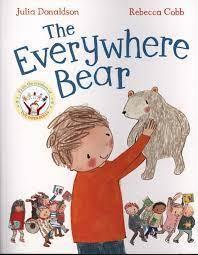


Important dates

03rd Feb – Number day



14th Feb – Safer internet day
20th Feb – 24th Feb half term
Personal, Social and Emotional Development:
As the children develop socially and emotionally, they will continue to find resolution to conflict through talk. The children will continue to use the Zones of Regulation to help understand and be able to describe their feelings. The children will show a lot more confidence when trying new things and experiencing new situations.
As always, the children will work as a team and develop deeper friendships with each other.
Mathematics:









During this half term, The children will continue to work on numbers within 5, deepening their understanding of their composition. This will also include recognising quantities without counting and being able to recall one more and one less.
Children will learn that some things are ‘heavier’ or ‘lighter’ than others by comparing mass. They will be taught how to use language associated with volume. Children will also begin to use language associated with length and height and learn to compare measures within 5.
Expressive Arts & Design:
Throughout this half term, children will be taught about the three primary colours. They will be given the opportunity to explore what happens when colours are mixed together. Children will be supported to think about what they intend to create before they begin. They will be encouraged to make a plan before creating a model.
Music will be linked to our traditional tales, with children using different instruments to demonstrate different emotions within the stories. Simple codes will be used to help children know when to play their instrument.
Communication and Language:
Reception continues to be a language-rich environment, where children are exposed to new vocabulary that links to different areas of the curriculum. Children are encouraged to use this new vocabulary when answers questions and providing reasoning.
The children will begin to participate in simple discussions and learn to agree or disagree with their peers in a respectful manner. For example, “Should the fox have eaten the gingerbread man?”
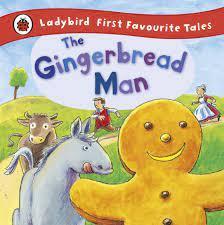
Literacy:
Children will continue to take part in daily phonics sessions to support their reading development. During these sessions, children will continue to develop their segmenting and blending, allowing them to read words and simple sentences.
Children will be given lots of opportunities to develop their writing skills. We will be focussing on the children using their phonic knowledge to write words and will be building towards writing short captions.
Throughout this half term, the children will be reading some traditional tales. Lots of the learning across the curriculum will be inspired by the adventures of the characters within these books.

Reception Curriculum Map Spring 1
Understanding the World:
As part of our exploration about the world around us, children will be encouraged to think about animals and their young. They will consolidate the names of animals and learn the names of their offspring. As part of this, they will also learn about how they have grown and changed from babies to children.

To link with the traditional stories in English, the children will be exploring the differences between human-made and natural materials to help build houses for the three little pigs.
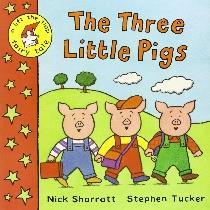
As they explore materials, they will make links to their senses. The children will be taught the five senses and be able to use them to complete tasks.
Personal, Social and Emotional Development:
This half term will see us continue to work on the daily routines in school that allow children to become regulated and settled, ready to learn. Children will be encouraged to share resources and take turns within activities We continue to use the ‘Zones of Regulation’ to allow children to manage feelings and emotions independently.
Children will begin to recognise the emotions of others and know how to respond accordingly. They will be encouraged to think about how their actions may have a positive or negative effect on how others feel.
Physical Development:
The children are really excited to be working alongside the Bike Ability Trust in January! They will be visiting school during the first week back and working with small groups to develop children’s confidence when using balance bikes. Don’t forget to check Seesaw to see how much fun your child has!
Mr Meyer will continue to teach fundamental movement skills in his PE sessions. This includes children being able to move with confidence in a variety of ways. These skills will be developed further during our outdoor learning time. Please continue to practise using your fiddly fingers to master fastening clothing and shoes (zips, buttons, Velcro).
Additional Information:
Reading continues to be a huge focus in Reception, please ensure you are practising at home and leaving a comment in your child’s reading record. Share a story book exchange will return to a Monday. Please make sure your child returns the book so they can take a new one home.
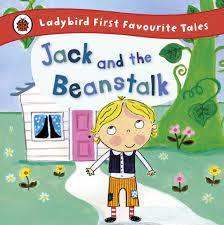
PE will be changing to a Thursday for this half term, please ensure your child is not wearing earrings on this day.


Mathematics: In Mathematics, we will continue to Recognise, compose, decompose and manipulate 2D and 3D shapes. We will then move on to additive structures where we will: combine two or more parts to make a whole, explain that addends can be represented in any order, explain that the = sign can be used to show that the whole and the sum of the parts are equal.

Year 1 Curriculum Map Spring 1
Science – Animals including humans:
The children will identify common vertebrates; carnivores, herbivores and omnivores the structure of animals and link human body parts to the senses.
Builds on names of common animals; life cycle of a butterfly (EYFS)
Geography – Our wonderful world
The children will learn: the names and locations of the seven continents and five oceans, recognise landmarks, understand geographical similarities and differences through studying human and physical geography of a small area of the UK and non-European country. Builds on understanding of landmarks in the local area learned in the early years.
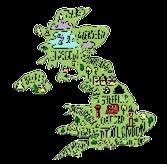
Art
In Art, we will explore mark making with paint using primary colours. We will use the work of Mondrian as a focus. This builds on the children being able to hold drawing tools correctly which they learned in the early years.
DT – How does food affect your senses?
English:
The children will read the story, ‘Zeraffa Giraffa’. They will continue to develop their work on adjectives when writing a character description.






Link to Geography

The children will meet an alien and a young girl who find themselves in trouble in ‘The Way Back Home’. They will write a continuation of the plot:
* Link to history – Explorers
Children will create their own calligram poem about Spring and will recite this to an audience.

History - How have explorers changed our lives?
In history we will be studying the lives of astronauts Neil Armstrong Mae Jemison. Looking at their significant achievements and the impact they have had on our lives today.
The children will Peel, chop and grate a selection of vegetables and modify food to suit food senses.
* Link to science and PSHE







Phonics - Children will have a daily phonics lessons and will continue to be taught to read using the Read Write Inc phonics scheme. They will learn 3 new sounds each week and will practise reading words containing new and previously taught phonics through decodable books matched to their ability.


ICT/Computing: Programming





The unit builds on programming disciplinary knowledge in EYFS.
The children will learn to move a robot using: buttons in four directions. They will develop routes and instructions on how a robot can get to a destination.
Comic Creation
RE
–
What is Easter?
The focus of this unit is the theme of religious celebration through exploration and experience of the major Christian festival of Easter. The unit begins with the first Easter day stories and explores the Christian belief that Jesus brings new life and is God’s Gift to the world.




Builds on understanding of Easter covered in EYFS.
PE – Run, jump, throw
In PE, the children will develop skills of agility, Balance and Co-Ordination through fun games and team activities. Builds on fundamental skills (EYFS)
Music: Pulse, rhythm, performing and listening and appraising


3D Design skills.
PSHE: relationships
Builds on understanding of Easter covered in EYFS.
The children will play games, perform notation as body percussion, identify a variety of instruments by their sound and use them to play simple notations, listen to orchestral/folk/modern music, identify and compare the moods, emotions and genres of two songs. Our learning will culminate in a performance of a folk song.
Text and Images
We will be exploring the theme of relationship looking at: families and people who care for me, caring friendships, respectful, online relationships and staying safe. Builds on previous learning in year 1 and EYFS.
Reading and Spellings at home:
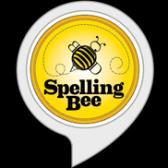
Builds on EYFS fundamental skills.
To reach their full potential, children must be reading aloud with an adult at home every night. Reading develops skills which are invaluable across the whole curriculum and this extra practise can have a significant impact on the amount of progress made, and the speed in which it is made. When you are reading or practising sounds with your child, please remember to sign in their reading record.
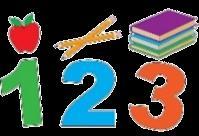

Maths Basic Skills:
Every Friday, we will be having a maths basic skills quiz. This will help the children to improve their fluency of our addition and subtraction skills and help them really embed their number bonds.
Knowledge organisers which outline the key content covered in History, Geography, Science and R.E. will be uploaded onto Seesaw.

Please take a look and quiz your child on their newly acquired knowledge!

Homework: In this half term, children will continue to receive one piece of homework each week. The focus will alternate between phonics and maths on a fortnightly basis. Homework will be sent out on Friday afternoons and will be required back in school by the following Friday. Please encourage and support your child with their homework by making sure it is completed.

English:
For our reading focus this half term, we will be studying the book, ‘The Bear and the Piano’ by David Litchfield. This tale follows a young bear who finds himself mastering a strange instrument he found in the woods. His journey takes him on an exciting journey around the world. This inspiring story about following your dreams, will allow us to build up our writing skills in order to create our own persuasive letter to the Bear. We will use the text as inspiration for a nonchronological report all about brown bears and their habitats.
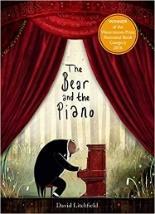
*Link to Science (habitats), Geography (woods) and History (David Attenborough)
Year 2 Curriculum Map
Spring 1
Science: Living things and their habitats:
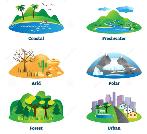
Mathematics:
This half term, we will be deepening our understanding of multiplication and division. We will recap identifying, making and adding equal groups as repeated addition, whilst embedding our 2, 5 and 10 times table skills. We will continue to work on our fluency and speedy recall and delve into some reasoning and problem solving challenges.
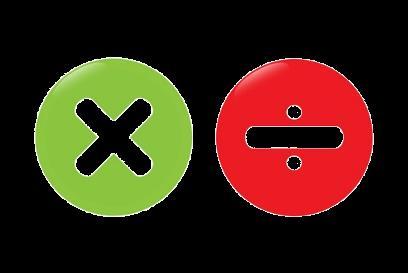
This half term, we will continue to build on our knowledge of common animals from Year 1. We will explore both world and microhabitats and understand why they are crucial for the survival of the animals that live there. We will also use our knowledge and understanding to develop simple food chains, showing links to predator and prey.
*Link to Geography
Design Technology




Food and Nutrition
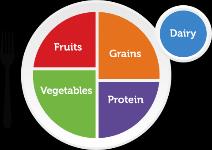
How healthy is your food?
Geography
If you go down to the woods today, what will you discover?
This unit of work will see us building upon children’s knowledge of the climate around the poles and equator, as well as deepening their knowledge and recall of continents and oceans. Children will deepen their understanding of climate from Year 1, when considering why forests differ in different locations. Children will have further experiences of fieldwork through the exploration of maps and investigating our school grounds.
*Link to Science (plants- evergreen and deciduous trees)



This half term, we will shape and form ingredients to make delicious, healthy food using a range of culinary techniques.
* Link to Science – Animals including humans (Nutrition) PSHE – Physical health and mental wellbeing (Health)

Computing: Programming


We will develop our understanding of instructions in sequences and the use of logical reasoning to predict outcomes. We will design algorithms and then test those algorithms as programs and debug them if we come across any issues
PSHE: Relationships
This half term we will be discussing who cares for us, what makes a good friend and respectful relationships both on and offline.
* Link to Computing






PE Run, Jump, Throw
In PE this half term, we will develop power, agility, coordination and balance over a range of engaging games and activities. We will increase our confidence within our throwing skills whilst negotiating obstacles and showing increased control of our body.
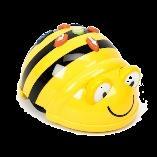
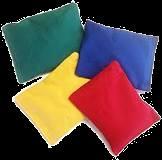

Times table Tests: Every week Friday morning, we will have a times table test. When your child gets full marks for 3 consecutive weeks, they will move onto the next times tables and will receive a label in their reading record book.


Phonics and Spelling:


We will continue to embed our Set 2 and Set 3 sounds, whilst being introduced to Year 2 spelling patterns to become fluent with our spelling.
Music:

We will continue to build upon our knowledge of pulse and rhythm through active listening, appraising and singing & performing.
Reading at home:
To reach their full potential, children must be reading aloud with an adult at home every night. Reading develops skills which are invaluable across the whole curriculum and this extra practise can have a significant impact on the amount of progress made, and the speed in which it is made. When you are reading, or practising basic skills with your child, please remember to sign in their read for a chance to win prizes.
RE - What can we learn from stories about God?
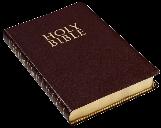
Children explore some parables from the gospels and learn that Jesus was a good storyteller who used stories to teach people about God. Children will be expected to draw on their own experience and understanding of storytelling and story writing.
Knowledge organisers which outline the key content covered in History, Science and R.E. will be uploaded onto Seesaw
Homework:
In Year 2, children will receive homework through Seesaw every Friday that will consolidate their learning from the week. This is required to be completed by the following Friday.
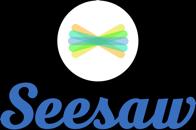
Please support your child with their homework, encouraging them to talk about similar tasks they have been doing in school, so that they become confident with articulating their learning.

English: Linked to learning about the Earth’s layers in geography, children will explore the non-fiction text, ‘Street Beneath My Feet’ by Charlotte Guillain. Children will create a non-chronological report detailing what can be found there.

*Link to Geography

During whole class reading sessions, children will delve into the story ‘Charlotte’s Web’ by E.B. White.

Applying the VIPERS reading disciplines, children will broaden and deepen their understanding of vocabulary, inference, predictions, explanations, retrieval and summaries. Towards the end of the term, children will explore how their senses link to colour. They will construct a metaphorical poem about what colours touch, taste, smell and sound like inspired by ‘I Asked The Boy Who Cannot See.’
Year 3 Curriculum Map Spring 1
Science – Forces and Magnets:
Year 3 will conclude their study of rock by analysing soil samples, identifying the rock types they find within, and investigate the permeability of different rock categories.

Understanding the chemistry of materials will lay the perfect foundation for their new topic of forces and magnets, when they will be testing the unseen forces that act upon all matter. What better way to investigate than a speedway friction test and a classroom-based scrapyard challenge?
RE – What is the significance of the events of Palm Sunday and Holy Week? Children will build on their prior knowledge of Easter from KS1 as they explore significance of the events from Palm Sunday, through Holy Week to Easter Sunday.
Mathematics: In mathematics, children will recognise, draw, rotate and join right angles. They will identify vertices and 4-sided polygon shapes with right angles. Children will move onto using efficiency of strategies when adding and subtracting to rearrange equations.






Geography – What is beneath our feet? This unit builds on children’s ability to locate the world’s countries and they will start to identify a much wider range of countries. Children will use fieldwork to observe, measure, record and present the human and physical features in the local area.

Using maps, children will look at countries, cities and geographical areas, comparing changes to their structure over time. Children will explore climate zones, biomes and vegetation belts, rivers, mountains, volcanoes and earthquakes, and the water cycle.
History - Should we celebrate the Ancient Egyptians?
Children will build on their understanding of innovation and civilisation to explore the lives of the Ancient Egyptians. Investigating who they were, how they lived and in what they believed, children will use primary and secondary sources. Linked to their learning in English, children will construct a biography about King Tutankhamun.
Design and Technology – Systems:




In this half term, pupils will look at different types of energy and how these can be used to power different devices. They will consider how design choices are influenced by energy sources.
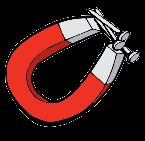
Computing: This half term, children will build on their knowledge of programming and have an introduction to Scratch as they learn to program sprites, create sequences, order commands and make a digital instrument. They will use computational thinking to solve problems. *Link to Music
PE - Gymnastics: Building on disciplinary learning in Year 2, where children developed their strength, flexibility and gymnastic elements, children will use basic compositional ideas to improve sequence work in unison and attempt to bring explosive moves into floor work through jumps and leaps.

PSHE - Relationships




Children will explore the relationships that they have with their family and friends. They will discuss what respect looks like both in person and online. * Link to Computing
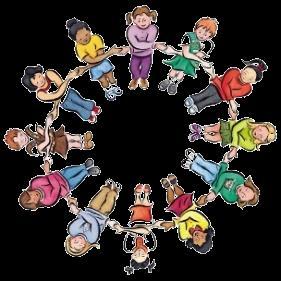

Times Tables:

Children should all be able to quickly recall the 2, 5 and 10 times tables. This year we will be introducing children to the 4 and 8 times tables. It is essential for children to be accurate and quick with tables so that they can confidently access the full maths curriculum. Keep practising!
French: This half term, the children will revisit their knowledge of Parisian landmarks and British cities, allowing them to compare and contrast aspects of both cultures. They will become ever more sophisticated in their sentence building, using conjunctions to ask and answer multiple choice questions and use commas in a list.

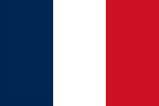
Reading and Spellings at home:








To reach their full potential, children must be reading aloud with an adult at home every night. Reading develops skills which are invaluable across the whole curriculum and this extra practise can have a significant impact on the amount of progress made, and the speed in which it is made. When you are reading or practising spellings with your child, please remember to sign in their reading record for a chance to win fantastic prizes.

Knowledge organisers, which outline the key content covered in Geography, History, Science and R.E. will be uploaded onto Seesaw. Please take a look and quiz your child on their newly acquired knowledge!
Homework: In Year 3, children will receive two pieces of homework each week. They will have one piece of English or maths homework and one piece focussed on times tables practice. Homework will be sent out on Friday afternoons and will be required back in school by the following Friday morning! Please encourage and support your child with their homework by making sure it is completed on time; this will consolidate your child’s learning as well as earning them achievement stars.

English:
This half term, the children will begin a new non-fiction book called, ‘Earth Shattering Events’. This links to the children’s learning in their geography lessons about why some natural disasters do more damage than others. Children will use their knowledge around this geographical topic to write a write a nonchronological report explaining the damage natural disasters can cause. Their report will include the relevant structural and grammatical features that will make their writing effective and suitable for their purpose, audient and layout.
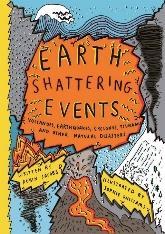

Year 4 Curriculum Map Spring 1

Mathematics:
Children will continue to broaden their knowledge and understanding of the relationships and patterns in the 3, 6 and 9 times tables. Later in the half term, pupils will then begin to look at the 7 times tables for the first time before they delve into understanding and manipulating multiplicative relationships. All of this work in maths lessons will help your child with their weekly times tables test and fluent recall of time stables up to 12 x 12.

Science (Biology): Animals Including Humans





Year 4 will be rolling up their sleeves and delving deep into the digestive system, using a practical model to explain the role of all the major organs. They will explain why the teeth of carnivores, omnivores and herbivores differ according to their respective diets, creating more sophisticated food chains and food webs.
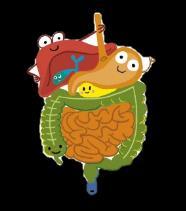
Before half term, they will begin a new topic, exploring the structure of all states of matter in chemistry, in readiness for their warmer weather work on evaporation and sublimation.
DT: Structures

History: What can Pompeii tell us about Roman life?
In history, children will continue to use primary and secondary sources to understand where the city of Pompeii is. They will look at why it the city is significant and so important to historians as well as understanding what it would have been like to live in Pompeii as a Roman. Towards the end of the half term, children will look at how Pompeii was destroyed and the lessons learnt after the eruption of Mount Vesuvius.
Geography: Why do some natural disasters do more damage than others?
This unit builds upon children’s learning about the structure of the earth and formation of mountains in Year 3. Pupils will look at the causes and effects of volcanic eruptions and earthquakes as well as thinking about how we they can protect themselves from natural disasters.
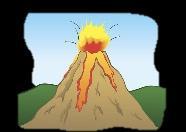

Pupils will explore which shapes can be used to provide stability in structures They will use a range of materials to investigate 3D shapes and in Lesson 3 they will collaborate on a class geodesic dome structure.
Art: Printmaking and Textiles


This half term, pupils will respond to the traditional designs of Kente cloth. They will create a range of surfaces, combining colour, texture and pattern Pupils will also explore the symbolic significance of colour.

Computing:
This half term, Year 4 will learn how to programme a screen turtle. They will do this by knowing how to program a computer by typing commands and explaining the effect of changing a value of a command.

RE – How do Christians use the Bible?
Children will focus on the composition of the Bible and use the different genres in the Bible to research the history of the Jewish people and the early years of the Christian church.
PSHE – Relationships
Children will look at what makes a respectful and caring relationship and understand who and where they can seek help if they are not experiencing healthy and safe relationships.
Children will apply their PSHE learning to online safety.
PE – Gymnastics:
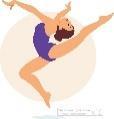



Children will develop their previous skills and techniques in gymnastics before learning how we can control when taking weight on hands. Pupils will show good body tension throughout a sequence with good, smooth transitions whilst understanding which muscles in the body they are using.
Reading and Spellings at home:

Times Tables:
• Explain how the Bible is important for Christians as a source of guidance and teaching.
French:
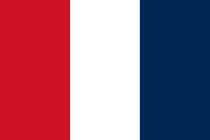
This half term, Year 4 will rehearse and recite complex sentences with fronted adverbials, using the range of masculine animals they know and learning four others. This will enable them to write compound sentences using coordinating conjunctions, which they will develop with adjectives before and after the noun.

• Understand some of the ways in which the Bible is used by Christians in church, in worship and at home.
Children should all be able to quickly recall all times tables up to 12 x 12 = 144 now. It is essential for children to be accurate and quick with tables so that they can confidently access the full maths curriculum. Keep practising!
To reach their full potential, children must reading aloud with an adult at home every night. Reading develops skills which are invaluable across the whole curriculum and this extra practise can have a significant impact on the amount of progress made, and the speed in which it is made. When you are reading or practising spellings with your child, please remember to sign in their reading record for a chance to win fantastic prizes.

Music:






This half term, children will listen to some reggae to demonstrate syncopation. They will play Sammy the Snake Bingo with Crochets as well as clapping and playing back syncopated rhythms.
Knowledge organisers which outline the key content covered in History, Science and R.E. will be uploaded onto Seesaw. Please take a look and quiz your child on their newly acquired knowledge!
Homework: Homework: In Year 4, children will receive two pieces of homework each week. They will have one piece of English or maths homework and one piece focussed on times tables/basic skills practice. Homework will be sent out on Monday and will be required back in school by the following Monday! Please encourage and support your child with their homework by making sure it is completed on time.

English: For our reading focus this half term, we will be studying Romeo and Juliet by William Shakespeare. By the end of this unit, children will have written a letter in first person from Romeo’s point of view. Children will include emotive language, questions, rhetorical questions and they will demonstrate a deep understanding of the story.
Children will also be studying Shakespearean sonnets. By the end of this unit, all children will have written their own sonnet. Children will study rhyme and figurative language to write impactful poetry.
Year 5 Curriculum Map Spring 1
Mathematics: In mathematics, we will be building on our understanding of the formal methods of calculation particularly involving long multiplication and dividing using the bus stop method. We will then apply this to calculating and comparing the area of flat shapes. Using their knowledge of multiplication, division and units of measure, children will learn how to use scaling to calculate amounts in real life contexts such as when making a recipe that serves 4 for just 2 people.
Science – Animals including humans (continued)

Continuing their learning from last half term, children will dig deeper into the physical and emotional changes that they can expect to go through as they progress through their adolescence years and into adulthood. In addition, they will explore gestation periods of different animals and conduct a scientific enquiry about baby growth rate.
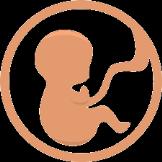

Mechanisms:




History – The Mayans: Building on our understanding of the concept ‘civilisation’ and ‘empire’, children will use a range of different historical skills to answer the enquiry question, “How have the Maya civilisation influenced the modern world?” They will investigate life during the Mayan times and how progressive this ancient society was for its time. Children will develop their disciplinary knowledge by analysing at a range of historical source types, such as: sketches, artefacts and independent research.
Geography – How does Paris compare to London? Building on their Year 2 learning about our capital city, children will locate both cities on a globe, developing their understanding of scale and distance. They will use six figure grid references when looking at maps to be able to describe the location of human and physical features such as: population, climate, time zone, economy, education and food and culture. They will investigate landmarks and explore reasons why tourists may visit each destination before planning a tour around Paris. *Links to French

Using gears and pulleys, children will investigate how to lift a car onto a roof, before making their own prototype pulley system.
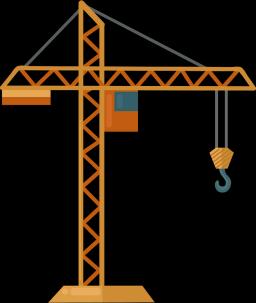
Art – Printmaking:

Children will use the reduction method to create a piece of printed artwork. They will explore the work of John Brusdon and make links between his work and Andy Warhol’s.

PSHE: Relationships
ICT/Computing:


PE - Gymnastics:
Building on their coding knowledge, this half term, children will programme microcomputers with ‘if…’ ‘then’ statements to make selections and carry out different tasks. They will debug their algorithms to identify and rectify any errors.
Children will explore family relationships as well as respectful and caring relationships with their peers. They will consider actions online and discuss online relationships and the importance of applying the same principles of a face-to face relationship when communicating with our friends online.
*
Link to Computing






RE – How did the bible develop and why is it still important?
This half term, we will build upon our knowledge of the Christian faith learned in autumn term by exploring the origins and importance of the bible.
Times Tables:
This half term, Year 5 will continue to invent a range of complex sentences using subordinate clauses, using their knowledge of time in French. They will recite and rehearse complex sentences with fronted adverbials, adjectives before and after the noun, and a variety of co-ordinating conjunctions to describe civic amenities in the town where they live.

Children should all be able to quickly recall all times tables up to 12 x 12 = 144 now. It is essential for children to be accurate and quick with tables so that they can confidently access the full maths curriculum. We are now having weekly times tables tests to check children’s recall so keep practising regularly at home!

Reading and Spellings at home:


Building on disciplinary learning in Year 4, where children built their own routines, children will build sequences that are more complex and adapt their performances based upon feedback. They will be introduced to developing symmetry individually, as a pair and in a small group and have the opportunity to take the lead when preparing a sequence. French:
To reach their full potential, children must be reading aloud with an adult at home every night. Reading develops skills which are invaluable across the whole curriculum and this extra practise can have a significant impact on the amount of progress made, and the speed in which it is made. When you are reading or practising spellings with your child, please remember to sign in their reading record for a chance to win fantastic prizes!
Knowledge organisers that outline the key content covered in History, Science and R.E. will be uploaded onto Seesaw. Please look and quiz your child on their newly acquired knowledge!
Homework: In Year 5, children will receive one piece of homework each week relating to work we have done that week. Homework will be sent out on Friday afternoons on Seesaw and will be required back in school by the following Friday! Children can also take a paper copy if they would prefer. Please encourage and support your child with their homework by making sure it is completed as this supports their learning in school.

English:
For our reading focus this half term, we will be reading the criticallyacclaimed ‘Holes’ by Louis Sachar. This novel will explore important themes which will fuel class discussions such as: crime and punishment, redemption, racism and adversity. Using a range of grammatical devices and figurative language, children will write a thrilling adventure narrative that details the protagonist’s escape. Later in the half term, we shall be moving onto Street Child by Berlie Doherty. This will complement well with our history unit on the Industrial Revolution as we will explore how the protagonist (Jim Jarvis) navigates through 1860’s London.
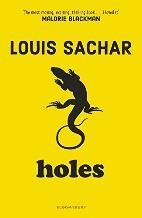
Year 6 Curriculum Map Spring 1

Mathematics:
In Mathematics, we will be continue to be working hard on our arithmetic skills to ensure quick and accurate answers. Additionally, we will be building on our knowledge of converting between units, through our study of ratio- how exciting!
As well as this, we will be revisiting shape and its properties. This will provide the opportunity to use protractors to measure angles and construct shapes.

As always, times tables are at the forefront of our learning and therefore children will be using Times Table Rockstars to aid this.
Science – The Circulatory System:
Continuing with this unit, children will explore the heart and identify the different parts of it (key blood vessels, the left and right atrium, left and right ventricle and the valves). Finally, we will look at how diet, exercise and drugs impact the body both physically and mentally. Once this is consolidated, we shall be moving onto our unit on ‘Electricity’ where pupils will look at circuits and explore different ways of increasing the voltage. During this, they will revisit ‘Light’. Towards the end of the unit, they will look at safety surrounding electricity.
RE –







How do religious people make moral and ethical choices?
This half term, we will continue our understanding of Jesus and Muhammed. We will also consider what it means to be moral and ethical and how religious people use these principles in their daily lives.
Geography – Is the damage to our world irreplaceable? Linking well to our recent history unit, pupils will be exploring climate change and how this affects us. We will consider how industrial change has affected our world and discuss whether this damage is reversible or not.
History – How has the Earth’s climate changed since the 170’s?
Within this unit, Year 6 will explore the Industrial Revolution by examining inventions made during this time. They will also inspect how the increase in factories influenced climate change.
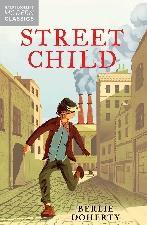
DT- How strong is a piece of spaghetti?
Children will test the strength of a piece of spaghetti and then use their understanding to construct a 1m tower. Art- Painting and Collage
Pupils will develop refined skills in layering and overworking. By studying Pablo Picasso and Patrick Caufield to create a series of still life drawings combined with collaging.
ICT/Computing: This half term, children will develop their programming skills. They will critique and improve games using their previous coding learning. Children will get the opportunity to design their own innovative, exciting game, which will appeal to children their age.
*Links to design and technology.


PSHE: Relationships
Children will consider actions and conduct online and discuss appropriate behaviours in online relationships. They’ll also look at respectful relationships.
* Link to Computing



PE - Football:
Building on their prior learning from Year 5, children will develop their co-ordination skills by practising dribbling, running with ball and shooting. They will also look at the game with more of a strategic approach to help make their team successful and ensure they’re all working together as a cohesive unit.
French: This half term, Year 6 will apply their knowledge of classroom vocabulary and adjectival agreement to compose complex sentences describing their learning environment. They will continue to hold their own conversations based around their name, age, where they live and how they are feeling, and start to express opinions and preferences, including their favourite subjects.


Times Tables:
Supporting with Assessments
This is a crucial half term for children and in order to help them we have set up a Bright Start Club on Wednesday mornings and a Booster Club on Tuesdays after school.


Knowledge organisers which outline the key content covered in
Children should all be able to quickly recall all times tables up to 12 x 12 = 144 now. It is essential for children to be accurate and quick with tables so that they can confidently access the full maths curriculum. Every week they will be tested on one. Keep practising!
Reading and Spellings at home:


To reach their full potential, children must be reading aloud with an adult at home every night. Reading develops skills which are invaluable across the whole curriculum and this extra practise can have a significant impact on the amount of progress made, and the speed in which it is made. When you are reading or practising spellings with your child, please remember to sign in their reading record for a chance to win fantastic prizes.
History, Science and R.E. will be uploaded onto Seesaw. Please take a look and quiz your child on their newly acquired knowledge!
Homework: In Year 6, children will receive two pieces of homework each week. They will have one piece of English homework and one piece of maths homework. Homework will be sent out on Monday afternoons and will be required back in school by the following Monday! Please encourage and support your child with their homework by making sure it is completed as this will aid them with their transition to secondary school.

